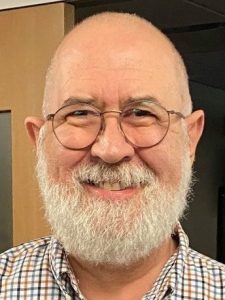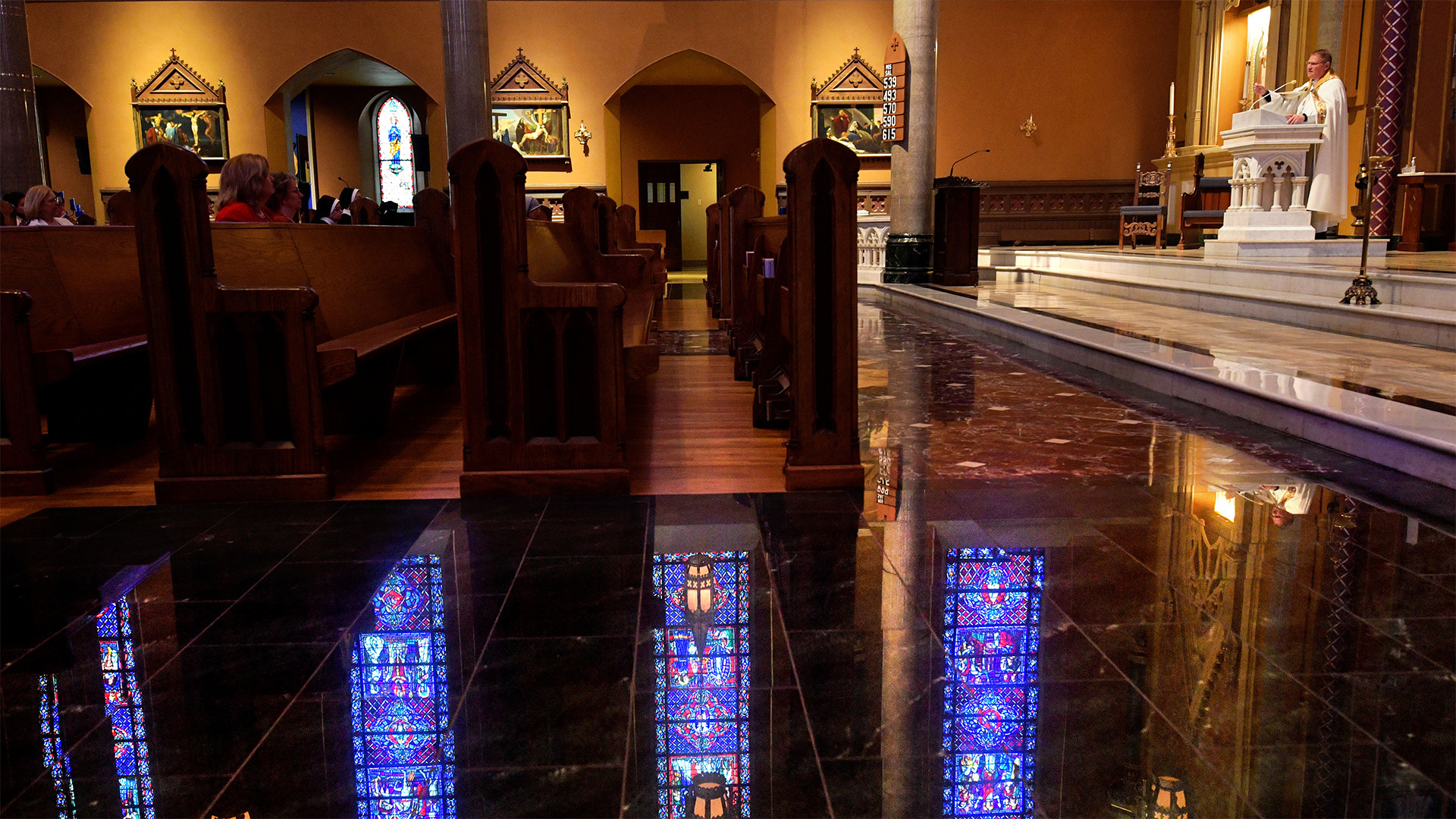New Bishop Louis Tylka has launched an era of local reassessment as part of one of the most enduring institutions in the western world
Roman Catholic Bishop Louis Tylka is taking the 26-county Peoria Diocese into what he hopes is a new phase of spiritual growth as it nears its 150th anniversary as part of a 2,000-year-old institution, one that traces its foundations back directly to Jesus and his apostles.

Known as “Bishop Lou” to the 132,000 faithful of the Catholic Diocese of Peoria, which sprawls across Illinois from the Quad Cities to Danville, Tylka, 53, was ordained as coadjutor bishop in 2020 to support Bishop Daniel Jenky. He assumed the full duties of overseeing the diocese’s 155 parishes when Jenky retired in 2022. He came to central Illinois from the Chicago area.
“The diocese in general has wonderful, faithful, generous people who love the Lord and love the church, who want to grow closer to the Lord and want to hand on the faith to others,” Tylka said.
That includes the members of 31 parishes in the Tri-County Area, 17 in Peoria County, with Catholics composing 19% of the population; seven parishes in Woodford County (15% of the population); and seven parishes in Tazewell County (10%).
A fresh look, ‘rooted in prayer’
Soon after he became bishop, Tylka introduced his two-year pastoral planning process, called “Growing Disciples.”
The initiative is intended to be a thorough and honest assessment of the diocese’s parishes, how they serve the Catholic faithful, and what improvements need to be made. Tylka has traveled throughout the diocese to meet with priests and hold listening sessions with lay leaders.
“The Growing Disciples process of discernment is our effort to reach decisions about the structure of the network of parishes,” Tylka said in a recent interview in his office at the Spalding Pastoral Center. “It is a way to take that honest look at where we’re at and how we move forward. What is the (Holy) Spirit calling us to move forward in and how do we set ourselves up for fruitfulness in the mission that the Lord has given to us?”
The initial phase, which started in late 2022, ultimately will lead to making possibly difficult decisions about the future of parishes and schools, Tylka said. Even then, the changes will not happen overnight, he said.
“It will take us probably several years to actually implement what we discern,” he said. “It’s necessary, though, and what’s freeing about it is that it was something the priests and the parishioners themselves felt that we needed to do. I’m not sitting here in my office with a map of the diocese and saying this, this, and this is going to change.
“So, it’s not like a decision being made in a vacuum. It’s a process that has engaged the parishes. And it’s all rooted in prayer.”
‘Headed in the right direction’
According to some active parishioners in the Peoria area, it’s rooted in transparency, as well.
Steve Driscoll, a member of St. Monica’s Catholic Church in East Peoria who was surveyed in the first phase, appreciates Tylka’s pragmatic approach to guiding the diocese into the future and how diocesan leaders are seeking input from the faithful.
Driscoll is active in several ministries at St. Monica’s, including its St. Vincent de Paul Society, which makes home visits and provides services to the poor. He personally is optimistic about the future of the Catholic Church, at least in the Peoria area. For example, he likes what he sees regarding Mass attendance, whether at St. Monica’s or other local parishes. Recently attending St. Jude’s in Dunlap for the Feast of the Assumption of Mary on Aug. 15, he found the sanctuary packed.
“It was not quite standing room only, but fairly close,” Driscoll said.
“I think the diocese is headed in the right direction,” he said. “There’s a wave of these 20-something and 30-something-year-olds who have families and want their children raised right. I think that they’re leading them in a better direction and the church is the foundation of that.”
Cullen and Deanna Casey, longtime parishioners at St. Mary of Lourdes Catholic Church in Germantown Hills, also expressed optimism.
“Bishop Tylka is doing a tremendous job in trying to be more open about where the diocese is and needs to be,” said Deanna Casey, who serves in music ministry and the parish’s Ladies Society. “There’s progress.”
Lay involvement, the growing number of permanent deacons, programs like Teens Encounter Christ and Cursillo, and vigorous priest recruitment efforts “help keep us energized and healthy,” added Cullen Casey.
Meanwhile, Driscoll said he appreciates how diocesan leaders are now responding to the abuse charges that have shaken the church over the past 20 years.
“(Diocese of Peoria leaders) have addressed it, identified it, published the names,” Driscoll said.
That particular challenge returned to the headlines earlier this year when Illinois Attorney General Kwame Raoul released a report on the credibility of various allegations leveled against clergy over many decades. The Diocese of Peoria issued a statement in the wake of that report that emphasized the “significant changes that have made the Church safer for children.
“To the Diocese’s knowledge, there is not a single priest of the Diocese with a substantiated allegation who is currently in ministry or who has not been reported to authorities,” according to the May 23 statement. The bishop and the diocese “remain committed to our efforts to heal the wounds of those who have suffered abuse and to the protection of God’s children everywhere.”
Supporting schools, seeking priests
Another challenge the diocese faces is lagging support for some schools in the face of population shifts. More than 8,100 students are educated in diocesan schools.
“In some areas where we have schools, the population has diminished,” Tylka said. “Obviously, the financial issue is a big challenge. We have a very great concern that the sunset is due for tax-credit scholarships, which have been a great gift to families in our schools.”
That credit, allowed through Illinois’ Invest in Kids Act, is set to expire at the end of 2023.
“We’re working very hard to convince the Legislature not to let that sunset,” Tylka said.
Meanwhile, another challenge faced by the U.S. Catholic Church in general is a priest shortage. Currently, 126 active priests serve the Peoria Diocese’s 155 parishes. The Growing Disciples initiative also will confront that situation, though Tylka is encouraged about vocations in the near future.
“We are blessed to have 22 seminarians entering the seminary this year,” Tylka said. “We ordained four priests in May (2023) and will ordain another four priests next May. It’s still not enough, though.”
Tylka expressed confidence that within five years, “we’ll have gotten to the point of fully implementing the new structure of parishes.
“My biggest hope is that we will have really begun to have a better appreciation and understanding of our calling to be disciples of Jesus Christ and be evangelists, missionary disciples out spreading the love and encounter of Jesus,” he said. “I hope there’ll be a lot of renewal in people’s hearts of their own deepened, intimate relationship with Jesus, and a willingness to share that with others.”





